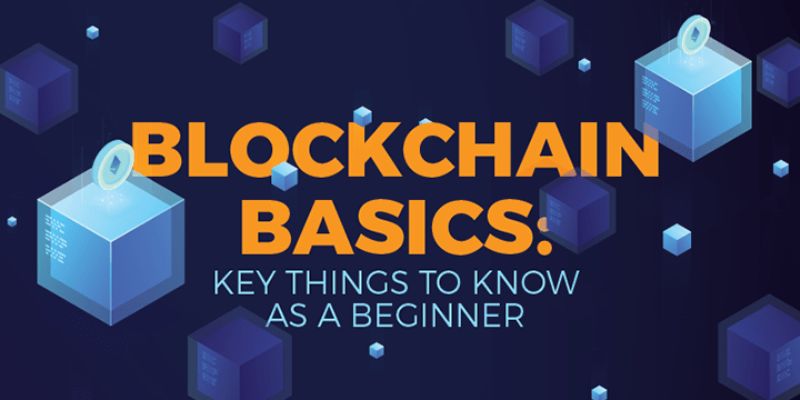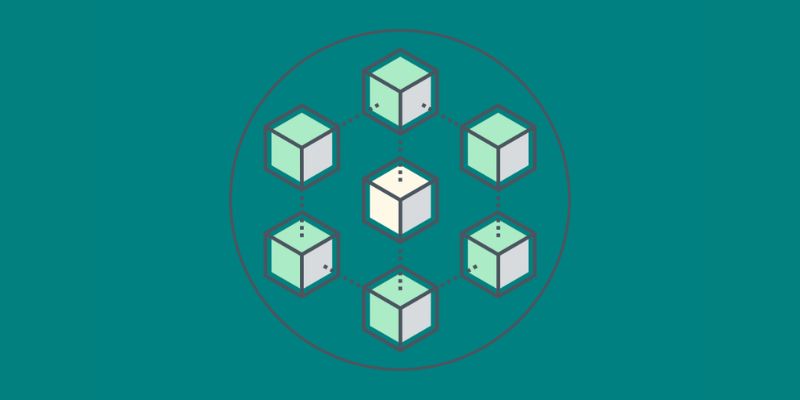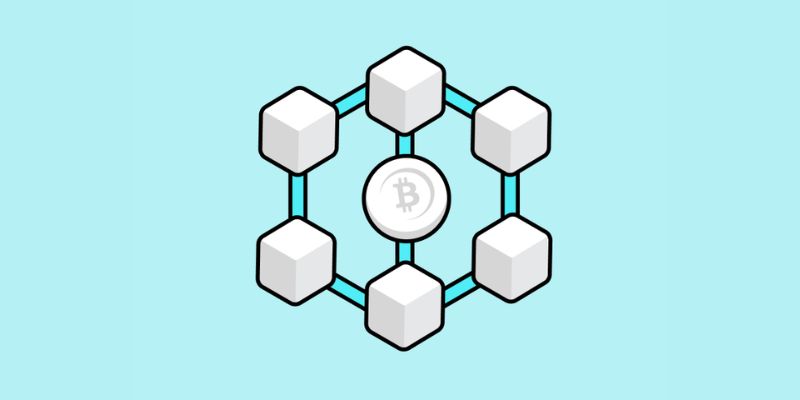Blockchain Basics: Dive into the tech that’s reshaping our world. Why stick to old-school ways when the digital world offers so much more? Let’s break it down. You’ve heard the buzz around blockchain, but what’s the real story? We delve into its structure and role, showing you just why it’s the backbone of a new digital order. From understanding nodes and blocks to mastering the mechanics of transactions, we unpack this innovative puzzle piece by piece. Whether you’re a curious newbie or seeking to polish your tech-savvy edge, join me as we unveil the solid foundation that’s supporting a digital revolution.
Understanding the Structure and Role of Blockchain Technology
The Backbone of Decentralization: A Primer on Nodes and Blocks
Let’s dive into what makes blockchain tick. Blockchain is like a digital ledger. It’s a list of all transactions for everyone to see. Think of it like a chain where each link is a block of data. These blocks link together in order, making a chain.
Now, blockchain technology explained simply? Here’s where it gets cool. Unlike a book that sits in one place, blockchain data is spread out. This spread-out style is what we call a decentralized system. There’s no single boss or place that controls it all. Instead, lots of computers called nodes share control. These nodes hold copies of the ledger and keep each other in check.
Nodes talk to each other in a peer-to-peer network. Anyone with a computer can join this chat. They help pass along data and keep things running smoothly. Every time someone makes a deal, or a blockchain transaction, all nodes update their ledgers.
Understanding distributed ledgers means seeing how secure they are. The magic of cryptography in blockchain comes alive here. Cryptography is a fancy word for writing in secret code. Computers use it to scramble data. Only people with the right key can read the code.
What about these keys? Well, in blockchain, cryptographic keys are like super secure passwords. They prove who we are. There are two types: a public key that everyone can see and a private key that we keep to ourselves. No one breaks in without the private key.
Security doesn’t end there. Hash functions help too. They turn data into unique codes. Even a small change makes a whole new code. This ensures that each block is one of a kind and secure. And if all nodes agree a block is legit, it gets added to the chain. This agreement is what we call a consensus mechanism.
Now, when people talk about immutability in blockchain, it means whatever goes into the blockchain stays there. No take-backs or rewrites. Once it’s in, it’s in for good. This makes it super tough to cheat or make a fake block.
And then there are smart contracts. Imagine them as programs that run themselves when set conditions meet. They’re smart because they do this without us telling them each time.
Lastly, the start of every blockchain is the genesis block. It’s the first link in the chain. And sometimes the chain can split, creating what’s called a blockchain fork.
But what about growing pains? With growth comes the challenge of scalability in blockchain. More users can mean slower and pricier service. So, the community keeps finding ways to grow without the lag.
And that’s just the start of our journey into blockchain. From here, we get into the nuts and bolts of making deals, keeping secure, and even entering entirely new digital worlds with decentralized applications. Buckle up; we’re in for an exciting ride!
The Mechanics of Blockchain Transactions and Consensus
Exploring Hash Functions and Their Importance in Security
A hash function is key to keeping blockchain safe. It turns data into a unique code. This code acts like a digital fingerprint. No two data pieces have the same code. This is how blockchains stay very secure.
When a blockchain transaction happens, the details turn into a hash. If someone tries to change the transaction, the hash changes too. So, everyone on the network can see the change. This way, hash functions help keep our data safe and sound.
From Proof of Work to Proof of Stake: Understanding Consensus Mechanisms
Consensus mechanisms are rules. They make sure all players in the network agree. Two main types exist: proof of work and proof of stake.
Proof of work makes computers solve hard puzzles to add new blocks. It takes a lot of power but keeps the system fair. In contrast, proof of stake selects validators who own more coins to confirm transactions. This uses less power.
These rules help everyone trust the blockchain. Each new block connects to the old ones using cryptography. This creates a chain that no one can break. So, when you hear about blockchain technology explained, think of it as a series of blocks linked by math and trust.
In the world of blockchain, trust is not just a feeling. It is built into the very code that runs this digital revolution. From the tiny hash to the great chain, each part is made with care. They all work together to protect, check, and record every moment of blockchain magic.
People use blockchain for sending money, signing deals, and storing data. Every time they do, the system checks itself. Nodes, which are like tiny computers, share data to keep the system up to date. All the while, smart contracts follow rules we set to run automatically.
Imagine a world where each transaction, vote, or contract is open for all to see. This world is built on blocks of data, deals done in seconds, and trust that does not waver. That’s the power and promise of blockchain. It’s not just for experts; it’s for everyone to share and build upon—a true digital revolution.
The Applications and Implications of Smart Contracts and dApps
The Dynamics of Smart Contracts: From Introduction to Practical Use Cases
Let’s dive into smart contracts. These are just rules that run on blockchain. They cut out the middle person. So, when you deal with money, property, or anything valuable, smart contracts manage it all. This means less wait time and no extra fees to pay someone else.
Think of a vending machine. You pop in money, choose your snack, and get what you want without help. A smart contract is like this, but for all kinds of deals. It’s safe and runs on its own when conditions are met.
They’re big in real estate for selling houses without a realtor. Also, artists use them to sell music directly to their fans.
The Rise of Decentralized Applications (dApps): An Overview
Now, onto dApps. These apps give the power back to users. Unlike regular apps, no one owns these, and they don’t shut down easy. dApps work on blockchain through smart contracts. They let you play games, trade items, and even invest without big companies in control. This is all thanks to blockchain — a way of keeping records that’s tough to change or hack. It’s spread out over lots of computers.
For fun, think Pokemon Go, but your items really belong to you, tradeable and safe. For work, think voting systems where no one can mess with your vote. dApps are changing the game in many ways, and they’re just getting started.
Addressing Blockchain Scalability and Interoperability Challenges
The Hurdle of Scale: Tackling Blockchain’s Growth Issues
Imagine you have a growing town. As more people move in, you need bigger roads, more shops, and schools. The blockchain faces similar growth issues, which we call scalability. Simply put, how can a blockchain support more users, transactions, and data? We’re always trying to answer this puzzle.
As an expert, I often explain that when a blockchain can’t scale, everything slows down. Think of being in a traffic jam; nobody likes that. Scalability in blockchain is all about speeding up that traffic so everyone can move quickly and freely. To improve this, we’ve got to look at the tech under the hood.
Blockchain transactions need room to move. Each block of data has a size limit. If we pack blocks with more data or create them faster, we help the traffic flow. This means we need to build smarter “roads” within the blockchain.
But here’s the thing, we must keep blockchain secure and running right while making these changes. When we talk about security in blockchain, we’re talking about strong locks on the virtual doors to our data. And just like towns have rules, blockchain has consensus mechanisms. These are the big decisions on how blocks of data get approved.
Bridging Networks: The Quest for Blockchain Interoperability
Now, think about playing with different sets of building blocks. Wouldn’t it be neat if all the pieces could connect, no matter the set? That’s interoperability in the blockchain world. It’s when different blockchains can talk and work with each other.
What is blockchain, after all, if not a way to connect people? When we can move info and value across different chains easily, that’s a win. But it’s not just nice to have; it’s a must-have for blockchain’s future.
Interoperability lets us trade, share, and use services across different blockchain networks. It’s like being able to use your phone in different countries without a hitch. If blockchain tech spoke the same language or could easily translate, we could see amazing new uses pop up.
Understanding distributed ledgers, cryptography in blockchain, and peer-to-peer networks helps us grasp why this is so hard. It’s like each blockchain built its own private internet. Now, we’re trying to merge them into a worldwide web. To do that, each network’s rules, like how to handle blockchain access rights or validate transactions, need to work together or at least understand each other.
This could lead to a place where all kinds of digital and real-world things blend smoothly. Imagine buying a house online with a click, safe in the knowledge that the smart contracts and digital ledgers are making sure everything’s correct and secure.
It’s a tall order, but it’s where we must head. We’re talking about a trustless environment where no one needs to know or trust anyone else to do business. That’s the true power of blockchain technology explained in simple terms. So, in my role, I show people how to tackle these challenges. Because, in the end, smoother roads and the ability to speak the same tech language in blockchain? That’s the golden ticket to a connected future that works for all of us.
In this guide, we’ve explored the nuts and bolts of blockchain, from its structure and roles to its far-reaching applications. We kicked off with the basics: how nodes and blocks create the backbone of this tech, and how cryptography keeps it secure. Then, we dove into transactions, hashing for safety, and how different consensus methods keep the network in sync.
We didn’t stop there; we peered into the world of smart contracts and dApps, weighing their uses and potential. Finally, we faced the tough topics: boosting blockchain’s capacity to handle more action and getting different blockchains to work together.
Remember, blockchain’s more than just tech talk; it’s a growing force that’s reshaping how we interact, agree, and trust. It’s essential to grasp how it works and what it can do for us. Now that you’re clued in, you’re better equipped to navigate this ground-breaking digital landscape. Stay curious, stay informed, and watch this space. The blockchain revolution is only just beginning.
Q&A :
What Are the Fundamental Concepts of Blockchain Technology?
Blockchain technology is founded upon principles that emphasize decentralization, transparency, and security. At its core, a blockchain is a distributed ledger that records transactions across multiple computers in such a way that the register cannot be altered retroactively. Blockchain basics include understanding how data is stored in blocks, how these blocks are linked together to form an immutable chain, the role of cryptographic hashing, and the consensus mechanisms that help maintain the network’s integrity, such as proof-of-work or proof-of-stake.
How Does Blockchain Ensure Data Security and Transparency?
Blockchain ensures data security through the use of cryptographic hashes, which turn digital information into a string of numbers and letters that is nearly impossible to reverse-engineer. Each block in the chain contains its own hash and the hash of the previous block, creating a secure and unbreakable link. Transparency is achieved as each participant on the blockchain network has access to the entire ledger and can view any transaction history, which is immutable once added to the chain. This openness builds trust among users and makes the system incredibly resistant to fraud and tampering.
Can Blockchain Transactions Be Reversed?
Once a transaction has been added to a blockchain and has received a sufficient number of confirmations from network participants, it becomes nearly impossible to reverse. This is due to the chain’s structure where each block is linked to the previous one through cryptographic hashes. To reverse a transaction, one would have to alter all subsequent blocks in the chain, which would require an impractical amount of computing power and collusion within the network. This characteristic is what gives blockchain its trustless nature, where users do not have to trust each other but can instead rely on the system’s protocols.
Is Blockchain Technology Limited to Cryptocurrency?
While blockchain technology gained its initial renown through cryptocurrency, particularly Bitcoin, its potential applications extend far beyond. The distributed ledger capabilities of blockchain can be applied to various industries and sectors such as supply chain management, voting systems, identity verification, intellectual property rights, and more. Non-fungible tokens (NFTs), smart contracts, and decentralized finance (DeFi) are some examples of blockchain’s versatility beyond mere currency transactions.
What are Smart Contracts in the Context of Blockchain?
Smart contracts are self-executing contracts where the terms of the agreement between buyer and seller are written into lines of code. They run on blockchain networks, which enables them to operate in a decentralized and transparent manner, free from the need for intermediaries like lawyers or notaries. Smart contracts automatically enforce and execute the terms of a contract when predetermined conditions are met, making them a powerful tool for automating processes and ensuring contractual agreements are adhered to without bias or error.


